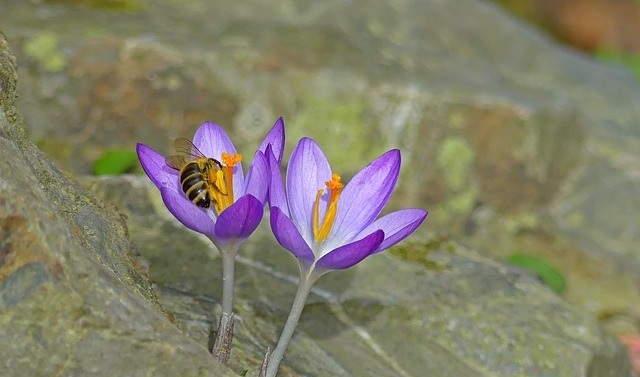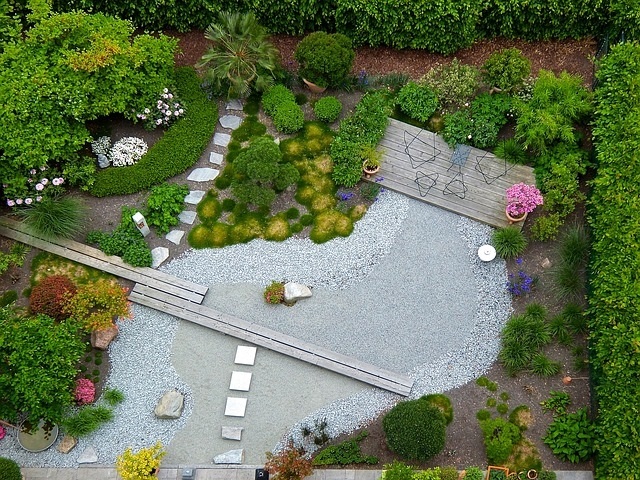Landscaping in PEI
Victorian poet Alfred Austin said that to nurture a garden was to feed not just the body but also the soul. And it turns out he wasn’t just spouting a fancy idea. Research shows that working in the yard really can help us emotionally as well as proving a satisfying and productive way of keeping fit.
Is landscaping difficult? A lot of people think they have to be a master gardeners or horticultural expert to create a great landscape but that’s not necessarily true.
It IS true that calling in a professional landscaper can save you time and effort in creating the gardens of your dreams — and probably give you a stunning result. But there’s also a lot to be said for doing it yourself, or at least tackling some elements of the project yourself.
With the Internet, there’s no end of landscaping ideas, landscaping design apps and simple gardening guidance. No need to feel you’re on your own!
If you’re up for the challenge, whether you’re starting from scratch or building on an existing landscaping design, there are a few basic but very important things you need to know.
Know Your PEI Zones
First, there’s the big climate thing. Lots of plants can only grow in certain climates. The areas they’ll grow in are known as hardiness zones, and there’s a map covering the entire continent of North America divided into individual zones ranging between 0 (the coldest climate) and 10 (the hottest).
Prince Edward Island is in Zones 5b and 6a, the warmer 6a covering much of the north and east of the island but with a bit to the west around Summerside. That doesn’t mean that, for example, a Zone 7 plant wouldn’t grow here. It likely just wouldn’t survive the winter.
Fortunately, garden centers both on PEI and online usually state the zone hardiness on their plant tags.
Annual, Perennials, Bulbs and Tubers

It’s perfectly possible to grow quite exotic plants like marigolds and many other colorful plants because they are annuals — meaning that they only grow in the summer and then die and disappear (though some annuals do seed themselves for future years).
Plants that don’t die but often go dormant in the winter are perennials and these often form the foundation of a well-landscaped garden, along with bulbs, which also produce flowers each year — like spring-flowering tulips and daffodils, or some of the summer bulbs.
Sort of similar to bulbs, tubers also “live” underground, producing beautiful flowers year after year. But in the PEI climate, many of them, like dahlias, have to be dug up and stored for the winter.
Perennials that keep their woody stems above ground all year round (even when they don’t have leaves on them) are shrubs.
Not Forgetting Veggies!
Of course, gardening and landscaping need not be just about flowers and shrubs.
More and more these days, homeowners are turning to their own back yard to produce home-grown vegetables — both to save money and to experience the sheer joy of growing their own.
Many fruits and vegetables can be grown here on PEI, though, in most cases, veggies need to be started indoors or bought as established seedlings from nurseries and garden centers.
If you want to know exactly when and where to start your veggies, check out the legendary Old Farmers’ Almanac, which has dedicated lists for each area of the island.
Start here: http://www.almanac.com/gardening/planting-dates/PE
Basics of Landscaping Your Yard

As I’ve said, there are literally hundreds of ideas and free plans for landscaping your garden online. But the route you take depends on the features you want in your yard — for example, flower beds, lawns, trees, pathways, arches and pergolas, patios and decks, pools and fountains.
It makes sense to spend some time thinking these elements through, bearing in mind how much maintenance each will require and their suitability for PEI. Pools and fountains, for example, likely will have to be turned off and drained for the winter, lawns will have to be mowed weekly in summer, flower beds will need regular weeding — and so on.
That said, landscaping experts recommend you follow several important “rules”:
- Sketch out a plan, either by hand or using landscaping software.
- Include existing plants you plan to keep.
- Identify which way the yard faces — gardens that enjoy west and southern exposure get the most sun.
- If your yard is small, look for opportunities to grow things vertically — on walls and fences.
- Think about the views you want to get from inside your house.
- Can you include evergreens to provide life and color during the winter?
- Plan the layout of plants in groups, repeating them in several places, to create what landscapers call “unity”.
- Is there an opportunity for a focal point that might be a specimen plant or large garden ornament? Use paths and other lines to lead to and draw attention to this feature.
- Get to know the blooming times of plants so you can make the most of the seasons with a continuous show.
- Don’t overdo the color. “One of each” doesn’t work. In fact, it’s better to plan color themes in advance rather than picking up a plant at the garden center and then wondering where you’re going to put it.
- Make sure any stoneware and concrete blends both with the garden and your house.
If you still need more help with deciding what to plant, you can search a special database for trees and shrubs on PEI. It lists over 700 varieties that can be grown on the island. Find it here: http://www.gov.pe.ca/treesandshrubs/search.php
Remember the Bees and Butterflies!
Don’t forget about wildlife in your yard, especially bees and butterflies, both important pollinators.
Again, you’ll find lists of plants that are attractive to insects online as well as get guidance from local nurseries.
A particular favorite is lavender, which grows well here, though some varieties may need to be brought indoors for winter. Bee balm is another popular choice.
We’re all alert to the declining populations of bees across the world. Do your bit to support them — maybe even think of building or buying a “bee hotel”, a small collection of pieces of bamboo. Insects love to climb into a colonize the hollows.
Landscaping Equipment
The landscaping equipment you choose depends on how much of the construction and maintenance work you plan to do.
Yes, you need a spade, a hoe, a rake, pruning shears, perhaps a lawnmower, a hedge trimmer, a weedwhacker, maybe a tiller. If you’re laying pathways you’ll need a level, a stone splitter and a rubber mallet. And if you’re building raised beds — increasingly popular these days — you’ll need all the usual carpentry tools.
Whatever you require follow these two golden rules:
- Store tools safely and securely out of reach of children and keep kids away from mechanical tools when you use them.
- Look after them. Clean and, where appropriate, sharpen them regularly. They’ll repay your care by lasting longer and being good at their job.
You should also make sure your homeowners insurance is in place and up to date. This will protect you both against things like theft of tools and equipment, accidents in the yard, and any damage your activities might cause to neighboring properties.
Happy landscaping!
If you are in the market for a homeowner insurance policy or a cottage insurance policy, Peake & McInnis LTD is your trusted PEI Broker.
Categories: Cottage Insurance, Home Insurance
